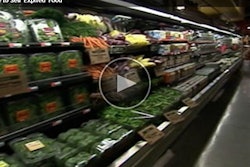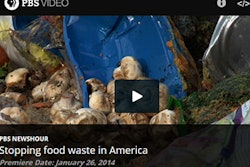
Interview with Don Hsieh, Director of Commercial and Industrial Marketing, Tyco Integrated Security
Don Hsieh of Tyco Integrated Security discusses the prevalence of food fraud in the United States and how food manufacturers can prevent it in their facilities.
Q: The EU recently released a report on food fraud. What are some of the foods most prone to fraud according to this report, and why are they at risk?
A: The EU report identified the top 10 products that are most at risk of food fraud as:
- Olive oil
- Fish
- Organic foods
- Milk
- Grains
- Honey and maple syrup
- Coffee and tea
- Spices (such as saffron and chili powder)
- Wine
- Certain fruit juices
Almost 70 percent of extra virgin olive oil is said to be adulterated. Higher priced extra virgin oil is often substituted with a lower cost regular olive oil or thinned out with alternative oils such as hazelnut, soybean, corn, peanut, sunflower, safflower, walnut, vegetable, canola or palm oil, and in one case, even lard.
Similarly, higher value fish is substituted with lower cost, more abundant fish varieties. A study by Oceania checked seafood samples from popular California sushi venues, grocery stores and restaurants and found more than half of the fish was mislabeled: Snapper was tilefish, white tuna or expensive ono was replaced 62% percent of the time with escolar. The common thread through both olive oil and fish fraud is that it is difficult for the consumer to detect and the potential financial gain is high.
Q: How prevalent is food fraud in the United States?
A: The Grocery Manufacturers Association (GMA) estimates that economic adulteration and counterfeiting of global food and consumer products costs the industry $10-15 billion per year and the cost of one adulteration incident averages between 2-15 percent of yearly revenues. Although food fraud has been conducted for thousands of years, it has only gained academic and regulatory interest in the most recent few years due to the increasing global impact of some high profile cases, such as the melamine contamination of infant formula that resulted in a $10 billion price tag, 300,000 babies affected around the world, and more than 50,000 hospitalizations. The United States Pharmacopeia Convention (USP) began building a food fraud database in 2012 and compiles both “scholarly” and “media” records from 1980 onwards. It now contains over 2,000 records of food fraud.
Q: What are the most common causes or motivations for food fraud?
A: Food fraud is the intentional adulteration of food through substitution, addition, tampering or misrepresentation of the product for economic gain. As it is by definition an intentional act, it is a food defense issue. As it is intentional misrepresentation for economic gain, it is a criminal act. It may or may not lead to a public health risk, but the threat exists due to adulteration, mishandling or misinformation. The motivation for food fraud for economic gain lends itself to conditions where the potential financial gain is high and the risk of getting caught is low.
Q: How can food fraud affect consumers as well as food manufacturers?
A: Both consumers and food manufacturers are affected when it comes to food fraud. For consumers, one of the biggest concerns is the health risk posed to the public when adulterated food is consumed. While not all food fraud results in a public health risk, any act involving intentional adulteration of food has the potential to harm. The most tragic example of the risk to human safety from food fraud was the melamine-contaminated infant formula in China.
Ultimately, the most significant impact of food fraud that affects both consumers and food manufacturers boils down to loss of consumer trust. The recent focus of the EU on food fraud was prompted by the horsemeat scandal where products that were advertised as 100 percent beef were, in fact, horsemeat. Market researcher Mintel found that six months after the scandal hit, just half of all Brits trusted the food industry to provide safe food to eat. Eighteen percent of consumers who had purchased ready meals labeled as beef said they will avoid ready meals with beef as a result of the scandal, while 10 percent said they will now avoid any frozen ready meals. Clearly, loss of consumer trust can be devastating to manufacturers’ and retailers’ business and their brand reputation.
Q: What steps can food manufacturers take to help prevent food fraud?
A: Companies need to increase the hurdles for committing the fraudulent activity by implementing preventive measures that increase the likelihood of detection or the difficulty in carrying out the crime. Organizations should implement a food defense strategy that takes into consideration the entire food supply chain. The proactive food defense plan should address the four A’s of actionable food defense: assess, access, alert and audit.
First, assess the risks in the whole supply chain. Start by conducting a vulnerability assessment of critical control points. Think about points where someone could attempt adulterating a product — both inside and outside your walls.
Second, consider who has access to critical control points. In particular, pay close attention to the storage and use of authentic packaging and labels as these may be targeted by fraudsters to perpetuate their crime. Do contractors, visitors and even employees have access to specific areas where only the employees doing their job should be able to access? By monitoring access points, you will be better able to identify specific people involved at the time of an incident.
Next, continuously monitor the entire supply chain as fraudsters will look for any vulnerability in the supply chain. Have your suppliers implemented food defense plans that meet your standards? Do your logistics providers protect the security of your supply chain? Employ technology to alert appropriate individuals of intentional and unintentional instances of food adulteration. In this phase, response time is critical. Every minute passed is a minute where more health risks could be created, which leads to a greater chance of your brand being tarnished.
Lastly, determine operational and regulatory compliance to best food defense practices and provide documentation of compliance to regulators. The Food Safety Modernization Act (FSMA) promotes the safety of the U.S. food supply by focusing on prevention, rather than reactive response. However, prevention is only as effective as the actual compliance processes put in place. Regular and random auditing using remote video technology can go a long way to ensuring that the preventative actions are in fact, in place and working.






















